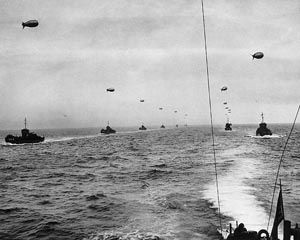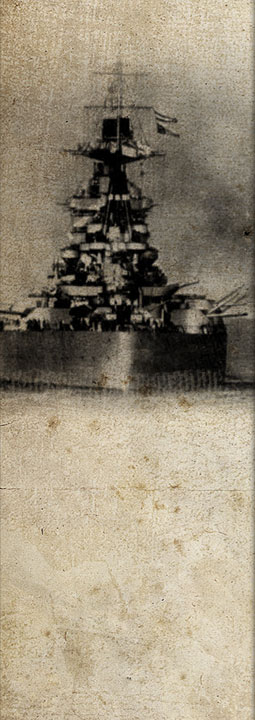
An important part of Neptune was the isolation of the invasion routes and beaches from any intervention by the German Navy – the Kriegsmarine. The responsibility for this was assigned to the Royal Navy's Home Fleet. There were two principal perceived German naval threats. The first was surface attack by German capital ships from anchorages in Scandinavia and the Baltic Sea. This did not materialise since, by mid-1944, the battleships were damaged, the cruisers were used for training and the Kriegsmarine's fuel allocation had been cut by a third. In any case, the Royal Navy had strong forces available to repel any attempts, and the Kiel Canal area was mined (Operation Bravado) as a precaution.
 The second perceived major threat was that of U-boats transferred from the Atlantic. Air surveillance from three escort carriers and RAF Coastal Command maintained a cordon well west of Land's End. Few U-boats were spotted, and most of the escort groups were moved nearer to the landings.
The second perceived major threat was that of U-boats transferred from the Atlantic. Air surveillance from three escort carriers and RAF Coastal Command maintained a cordon well west of Land's End. Few U-boats were spotted, and most of the escort groups were moved nearer to the landings.
Further efforts were made to seal the Western Approaches against German naval forces from Brittany and the Bay of Biscay. Minefields were laid (Operation Maple) to force enemy ships away from air protection where they could be attacked by Allied destroyer flotillas. Again, enemy activity was minor, but on 4 July four German destroyers were either sunk or forced back to Brest.
The Straits of Dover were closed by minefields, naval and air patrols, radar, and effective bombing raids on enemy ports. Local German naval forces were small but could be reinforced from the Baltic. Their efforts, however, were concentrated on protecting the Pas de Calais against expected landings there, and no attempt was made to force the blockade.
The screening operation destroyed few German ships, but the objective was achieved. There were no U-boat attacks against Allied shipping and few attempts by surface ships.


